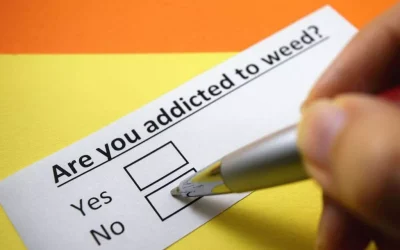31 Aug Antidepressants and alcohol: What’s the concern?
Content
But it is typically prescribed for patients with more severe alcohol disorders to take daily to abstain from drinking. If you have a medical condition (such as atrial fibrillation) that puts you at risk for developing a blood clot, your doctor might prescribe anticoagulant medications to “thin” your blood. While these drugs make it less likely your body will form blood clots, they also make you bleed more easily.
Can you drink on painkillers?
It is not recommended to drink alcohol if you are taking a prescription-only painkiller such as tramadol or codeine. Doing so could increase side effects such as drowsiness.
The side effects vary from drug to drug, so it’s important to use a prescription medication ONLY as it’s prescribed to prevent any unnecessary effects, and be sure to consult your doctor if you have any questions. Up to half of people with AUD will experience some withdrawal symptoms when easing off alcohol, experts say. These can include irritability, agitation, elevated blood pressure, increased heart rate, insomnia, increased anxiety, sweating, nausea and vomiting.
Get Help to End Polydrug Abuse
If you have a history of alcohol use disorder or problem drinking, you should inform your doctor of this issue, as it can change how your physician manages prescriptions. Your doctor may refer you to addiction specialists for treatment if chronic physical harm may have Alcohol and Pills been caused by underlying alcohol abuse. When combined with the effects of alcohol, many otherwise routine prescription drugs can become deadly. Relaxing with a drink or two at night is dangerous when the effects of alcohol are combined with certain prescription drugs.
- The prescribing healthcare professional can answer questions and provide information about the use of naltrexone for alcohol use disorder.
- Always seek the advice of your physician or other qualified health provider with any questions you may have regarding a medical condition.
- If you happen to have an anaphylactic reaction to an allergen after you’ve had a drink—in that case, take the antihistamine (and seek emergency medical help).
In addition, individuals may have other health related conditions such a hepatitis, HIV and AIDS. The Food and Drug Administration (FDA) has approved several different medications to treat Alcohol and Opioid Use Disorders. These relieve the withdrawal symptoms and psychological cravings that cause chemical imbalances in the body. “The combination of alcohol with these types of medications may increase these side effects,” Dr. Yacoub says. Always consult your healthcare provider to ensure the information displayed on this page applies to your personal circumstances.
Drug and Alcohol Interactions – What to Avoid
This is a good option for people who want the protection birth control provides without the permanence of an implanted device. If you plan to drink, consider that the amount you drink may have a more potent effect while you’re taking birth control. Combining alcohol with Concerta, Ritalin, or Focalin can worsen concentration. Adderall, Dexedrine, and Vyvanse can increase a person’s risk for heart problems.
What pain pills can you take after drinking?
After a night of drinking, make sure you don't take Tylenol, Excedrin, or other pain relievers with acetaminophen. The combination of alcohol and acetaminophen can seriously hurt your liver. If you want some pain relief, take aspirin, ibuprofen (Advil) or naproxen (Aleve).
In her role with INIA, Ozburn works collaboratively with others in the both the INIA-Neuroimmune and the INIA-Stress consortia to identify and test promising drug candidates in animal models. The INIA mechanism is an example of collaborative science, and has been essential for identifying immune targeting drugs and for advancing basic science research to improve human health. What’s more, most of these medications are covered by health insurance plans; generic options are also available. At least 71.8% and as many as 80% of overdose deaths involve opioids.
Attention and Concentration Drugs
In some cases, alcohol increases the bioavailability of a drug, which can raise the concentration of the medication in your blood to toxic levels. In short, alcohol and pain medication are a deadly combination, so it’s best not to mix them. OHSU is dedicated to improving the health and quality of life for all Oregonians through excellence, innovation and leadership in health care, education and research. The Scripps team conducted a double-blind, placebo-controlled clinical proof-of-concept study involving 51 people who were assessed over 11 days of treatment. If you or a loved one is ready to overcome an alcohol addiction, reach out today. Treatment providers can connect you with programs that provide the tools to help you get and stay sober.
Because he is a member of a support group that stresses the importance of anonymity at the public level, he does not use his photograph or his real name on this website. Be especially careful with any drug https://ecosoberhouse.com/article/how-to-get-someone-into-rehab-guide-for-families/ or multi-symptom remedy containing acetaminophen or ibuprofen. It’s possible that if you use them together, antibiotics may be less effective at clearing up the infection that you are being treated for.
The randomized control trial was double-blinded, so half of the men received naltrexone and half received a placebo, and neither the participants nor the scientists knew who had received which. Each week, participants also received counseling on how to reduce their alcohol use. But it is considered a major risk factor for alcohol-related illness and injuries, and it heightens the possibility that an individual will develop an alcohol disorder. A recent study suggested the use of a decades-old medicine taken before imbibing could reduce the amount of alcohol consumed. Muscle relaxants and alcohol both suppress your central nervous system, which controls the functions of your heart, lungs, and brain. Alcohol and medicines can interact harmfully even if they are not taken at the same time.

This means that if someone drinks 50ml of 40% spirits, which contains 20ml of pure alcohol, as little as 6ml of the alcohol will enter the bloodstream. There are several different types of medications that can interact with alcohol. If you’re at low risk of addiction to alcohol, it may be OK to have an occasional drink, depending on your particular situation, but talk with your doctor. The easiest way to lookup drug information, identify pills, check interactions and set up your own personal medication records.
When alcohol use is combined with multiple medications, it may magnify these problems. Older adults don’t metabolize alcohol as quickly as younger adults do, so alcohol stays in their systems longer and has a greater potential to interact with medications. In older adults especially, alcohol use may increase the risk for falls, serious injury, and disability related to balance problems.

The problem with that is aging slows down the body’s ability to metabolize alcohol, so it stays in a person’s system longer. At the same time, older adults are also more likely to take one or more medications, multiplying the risk of interactions. Treatment for alcohol use disorder may include talk therapy (also called “psychotherapy”), support groups, medicines, or a combination of treatments. Alcohol use disorder can be a long-term condition, like high blood pressure or asthma. Obviously, prescription sleep medication like Ambien (zolpidem), Lunesta (eszopiclone), and Restoril (temazepam) is designed to help you catch some ZZZs.
Types of Prescription Pain Pills
Most important, the list does not include all the ingredients in every medication. Is it bad to have a drink from time to time if you have chronic pain? As long as you are not taking medications that interact with alcohol, probably not. However, moderate to heavy drinkers should definitely consider breaking the habit. Researchers from Oregon Health & Science University and institutions across the country have identified a pill used to treat a common skin disease as an “incredibly promising” treatment for alcohol use disorder. There are many treatment options available, including inpatient rehab, government facilities, counseling and support groups like Alcoholics Anonymous and AI-Anon.



